World War One Heilsberg prisoner of war cemetery restored
- Published
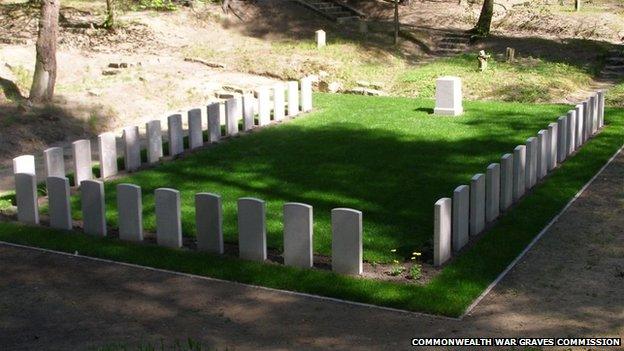
It is believed there are 39 British prisoners of war buried in the mass graves at the cemetery containing 2,800 war graves
Headstones commemorating 39 UK soldiers who died at a German prisoner of war camp during World War One have been erected in northern Poland.
The men were held alongside thousands of Russians at the Heilsberg prisoner of war camp and died in 1918.
They were buried in a nearby cemetery, but after it deteriorated in the 1960s, they were remembered with a memorial 75 miles away.
Now the Commonwealth War Graves Commission has rebuilt the cemetery.

The headstones have been grouped in a special memorial plot with a marker stone, known as a Duhallow Block, used when individual graves cannot be identified
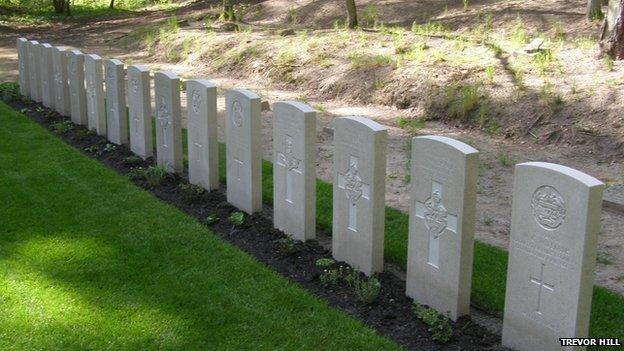
The men died during World War One while being held as prisoners of war in a camp nearby
Following an appeal by the Commonwealth War Graves Commission (CWGC), four of the soldier's families have come forward.
Steve Mannion, the great nephew of Gunner James Grier, who lived in Alderney, in the Channel Islands, said that up until now the family, from Rainham, Kent, had only been able to visit a WW1 memorial in Alderney.
"He (Grier) was captured and really badly looked after by his captors, dying at the age of 19, so he really hadn't experienced any life at all," Mr Mannion said.
The nephews of Pte William Gordon Jones, Gordon and Wyn Jones, from Llanfyllin, a small village in Powys, mid Wales, attended a rededication ceremony at the Lidzbark Warminski cemetery on Friday.
Gordon Jones, 68, said: "It's very emotional. Our family have never forgotten this soldier, who I am named after. We knew who he was, where he grew up and when he went to war, but were never certain how he ended up in this area in 1918."
Mr Jones and his brother, who were put in touch with the CWGC by an amateur historian, took a poppy wreath over to Poland and laid it next to their uncle's headstone.
"It is excellent work that the Commonwealth War Graves Commission have done and that we have now had the chance to pay our respects to our father's brother," Mr Jones added.

With new access to the site, the CWGC started work in March to rebuild the cemetery in Lidzbark
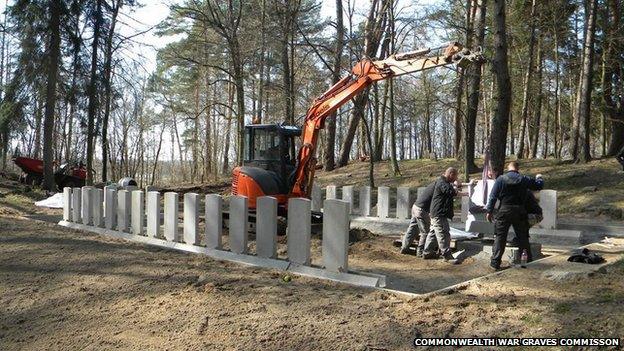
A team from the CWGC’s Belgian operations travelled to Lidzbark Warminski in northern Poland
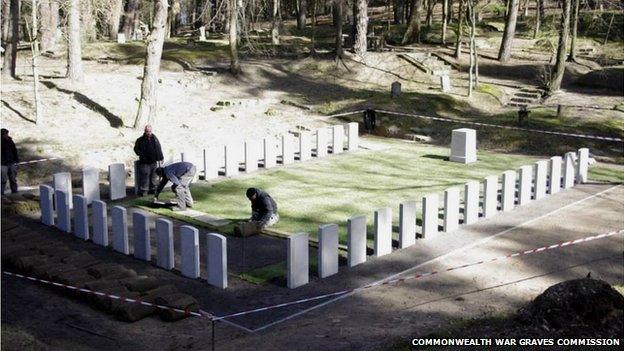
The CWGC said being able to restore the cemetery was "very important" for the families of those who died
Between August and December 1918, 39 British prisoners of war died at the Heilsberg camp, which was then in part of Germany.
It is likely their deaths were a result of insufficient food, overwork or one of the diseases that swept through the overcrowded and insanitary camps.
The nearby Lidzbark Warminski cemetery was used to bury the British and Russian prisoners of war who died at the camp.
After the war the Imperial (now Commonwealth) War Graves Commission marked the graves with a Cross of Sacrifice and headstones.
'Touch the past'
Peter Francis, from the CWGC, said: "During the 1960s the cemetery deteriorated at Lidzbark and access to the site became very difficult, so we took the decision to commemorate the men at Malbork Commonwealth War Cemetery.
"In recent years, that situation has completed turned around and so we have been able to get back into the cemetery and we sent a team from our operations in Belgium to Poland.
"Although it is not possible to identify the individual grave locations, we know the area where they are buried and this has been levelled and we've installed 39 brand new headstones and something the commission calls a Duhallow Block."
Mr Francis added: "To be able to restore the graves, to give their families somewhere to go and pay their respects, is something very important.
"You can physically go and touch the past and pay your respects and honour those men and women who died in a conflict 100 years ago."
- Published16 May 2014
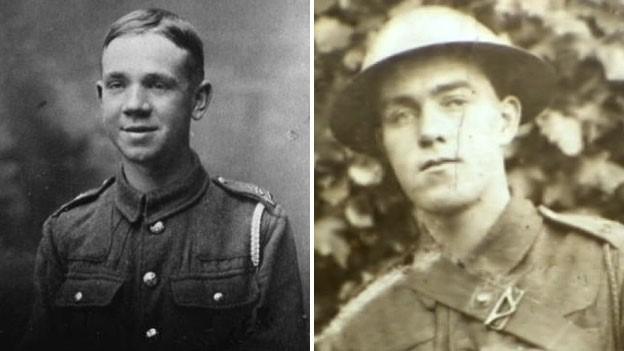
- Published12 May 2014
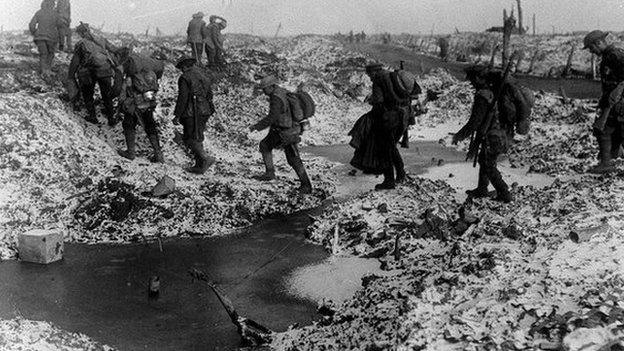
- Published9 March 2014
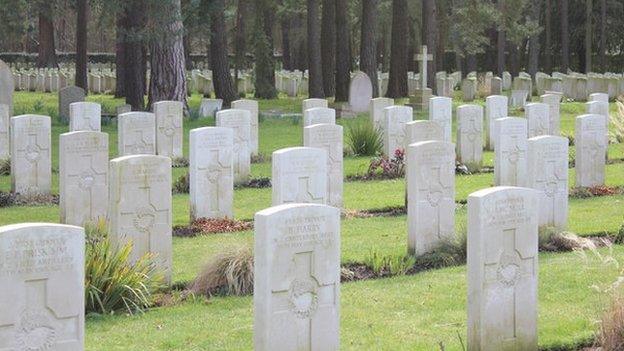
- Published2 March 2014
